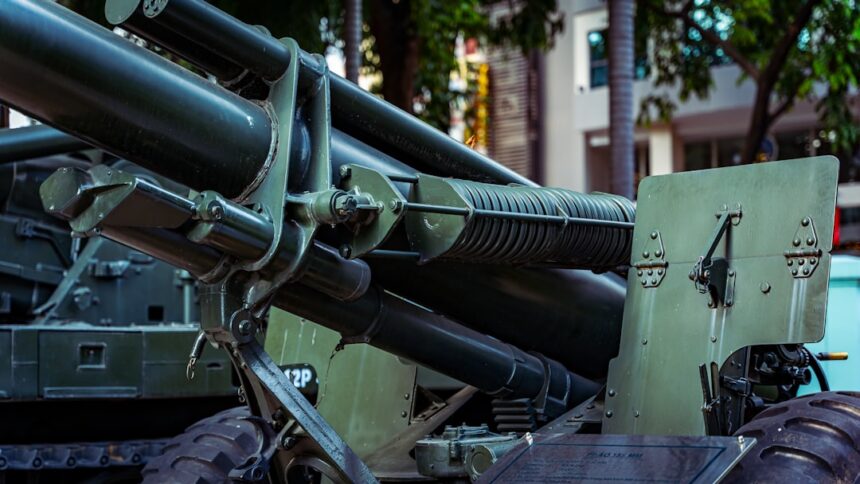In recent years, the integration of civilian technology into military applications has become a focal point of discussion, particularly concerning Russian missile systems. The utilization of civilian chips in military hardware raises significant questions about the implications for national security, technological advancement, and ethical considerations. As nations increasingly rely on dual-use technologies, the line between civilian and military applications blurs, leading to a complex landscape where innovation meets regulation.
This article delves into the historical context, current practices, and future implications of Russia’s use of civilian chips in its missile technology. The reliance on civilian components in military systems is not unique to Russia; however, the scale and impact of this practice within the Russian military framework warrant closer examination. The strategic advantages gained from employing commercially available technology can enhance operational capabilities while simultaneously posing risks associated with reliability and security.
As the geopolitical landscape evolves, understanding the nuances of this integration becomes essential for policymakers, military strategists, and international observers alike.
Key Takeaways
- Russian missiles have been using civilian chips in their technology, raising concerns about security and international implications.
- The history of Russian military technology shows a reliance on civilian chips for missile development and production.
- Civilian chips play a crucial role in the guidance, targeting, and control systems of Russian missiles, providing both advantages and disadvantages.
- Sanctions have impacted Russian military technology and the use of civilian chips, leading to potential future developments and international response.
- The ethical and legal implications of using civilian chips in Russian missiles raise concerns about security risks and international relations.
History of Russian Military Technology and Civilian Chips
The history of Russian military technology is marked by periods of rapid innovation and adaptation, often driven by necessity in the face of international competition. During the Cold War, the Soviet Union invested heavily in developing indigenous technologies to maintain parity with Western powers. However, the dissolution of the Soviet Union in 1991 led to significant economic challenges, prompting a shift in strategy.
In this context, the Russian military began to explore the use of civilian technologies as a cost-effective means to modernize its arsenal. The transition to incorporating civilian chips into military applications can be traced back to the early 2000s when Russia sought to revitalize its defense industry amid budget constraints. The availability of advanced microelectronics from commercial markets provided an opportunity for the military to enhance its capabilities without incurring exorbitant costs.
This shift not only allowed for quicker integration of new technologies but also facilitated collaboration with domestic and international tech firms, further blurring the lines between civilian and military sectors.
The Role of Civilian Chips in Russian Missile Technology

Civilian chips play a pivotal role in the functionality and performance of Russian missile systems. These components are integral to various subsystems, including guidance, navigation, and communication. By leveraging commercially available microprocessors and integrated circuits, Russian engineers can develop sophisticated missile systems that are both effective and economically viable.
The use of civilian technology enables rapid prototyping and iterative design processes, allowing for quicker deployment of advanced missile systems. Moreover, the adaptability of civilian chips allows for continuous upgrades and modifications to existing missile systems. As technology evolves, Russian military engineers can replace outdated components with newer, more efficient ones sourced from the civilian market.
This flexibility not only enhances the operational capabilities of Russian missiles but also ensures that they remain competitive in an ever-changing technological landscape. However, this reliance on civilian technology also raises questions about the long-term sustainability and security of these systems.
Advantages and Disadvantages of Using Civilian Chips in Russian Missiles
| Advantages | Disadvantages |
|---|---|
| Cost-effective | Potential security risks |
| Availability of commercial off-the-shelf (COTS) components | Reliability concerns |
| Access to advanced technology | Possible vulnerability to cyber attacks |
| Reduced development time | Compatibility issues with military systems |
The advantages of utilizing civilian chips in Russian missile technology are manifold. Firstly, cost-effectiveness is a significant benefit; civilian components are often less expensive than their military-grade counterparts, allowing for budget-conscious procurement strategies. This financial efficiency enables the Russian military to allocate resources to other critical areas while still advancing its missile capabilities.
Additionally, the rapid pace of innovation in the civilian tech sector means that military applications can benefit from cutting-edge advancements without lengthy development cycles. However, there are notable disadvantages associated with this approach. One primary concern is reliability; civilian chips may not be designed to withstand the extreme conditions encountered during missile launches or combat scenarios.
This could lead to failures that compromise mission success or endanger lives. Furthermore, the potential for foreign supply chain vulnerabilities poses a significant risk; reliance on external sources for critical components could expose Russian missile systems to disruptions or sabotage.
Impact of Sanctions on Russian Military Technology and Use of Civilian Chips
In recent years, international sanctions imposed on Russia have had profound implications for its military technology development, particularly concerning the use of civilian chips. These sanctions have restricted access to advanced microelectronics and other critical technologies, forcing Russia to adapt its strategies. As a result, the Russian military has increasingly turned to domestic sources for components, leading to a renewed emphasis on developing indigenous technologies.
The impact of these sanctions has been twofold. On one hand, they have spurred innovation within Russia as engineers and researchers seek alternatives to foreign technologies. This drive for self-sufficiency may lead to advancements in domestic chip manufacturing capabilities.
The challenge lies in balancing the need for technological advancement with the constraints imposed by geopolitical tensions.
Security Concerns and Risks Associated with Using Civilian Chips in Russian Missiles

The integration of civilian chips into military applications raises significant security concerns that cannot be overlooked. One major risk is the potential for cyber vulnerabilities; civilian components may not be designed with military-grade security protocols, making them susceptible to hacking or interference. This could compromise missile systems’ integrity and effectiveness, posing a threat not only to Russia but also to other nations that may be targeted by these weapons.
Additionally, there are concerns regarding supply chain integrity. The reliance on commercial suppliers for critical components means that any disruption—whether due to sanctions, trade disputes, or geopolitical tensions—could impact the operational readiness of Russian missile systems.
Comparison of Russian Missile Technology with Other Countries’ Use of Civilian Chips
When comparing Russia’s use of civilian chips in missile technology with other countries’ practices, it becomes evident that this trend is not isolated. Many nations have recognized the benefits of integrating commercial technologies into their military systems. For instance, the United States has also employed dual-use technologies in various defense applications, leveraging advancements from Silicon Valley to enhance its military capabilities.
However, differences in approach exist between countries. While Russia has faced significant sanctions that limit its access to foreign technologies, countries like China have invested heavily in developing their semiconductor industries to reduce reliance on external sources. This strategic focus on self-sufficiency contrasts with Russia’s current predicament and highlights varying national priorities regarding technological independence and military readiness.
Potential Future Developments in Russian Missile Technology and Civilian Chips
Looking ahead, potential developments in Russian missile technology will likely continue to be influenced by the ongoing integration of civilian chips. As domestic manufacturing capabilities improve and research into advanced materials and microelectronics progresses, Russia may be able to enhance its missile systems’ performance significantly. Innovations such as artificial intelligence and machine learning could also play a role in refining guidance systems and improving targeting accuracy.
However, challenges remain on the horizon. The ongoing geopolitical landscape will shape Russia’s access to global markets and technologies, potentially limiting its ability to keep pace with advancements made by other nations. As such, future developments will need to balance innovation with security considerations while navigating an increasingly complex international environment.
International Response to Russian Missiles’ Use of Civilian Chips
The international community’s response to Russia’s use of civilian chips in missile technology has been mixed. On one hand, there is recognition that many countries engage in similar practices; however, concerns about security implications and potential violations of international norms have prompted calls for greater oversight and regulation. Some nations advocate for stricter export controls on dual-use technologies to prevent their misuse in military applications.
Additionally, diplomatic efforts aimed at addressing these concerns have emerged as a crucial component of international relations. Engaging in dialogue about responsible technology use can help mitigate risks associated with dual-use technologies while fostering cooperation among nations committed to maintaining global security standards.
Ethical and Legal Implications of Using Civilian Chips in Military Technology
The ethical and legal implications surrounding the use of civilian chips in military technology are complex and multifaceted. On one hand, leveraging commercial technologies can enhance operational effectiveness and reduce costs; however, it raises questions about accountability and responsibility when these systems are deployed in conflict situations. The potential for unintended consequences or collateral damage must be carefully considered when integrating civilian components into military applications.
Furthermore, legal frameworks governing dual-use technologies are often inadequate or outdated, leading to ambiguity regarding compliance and enforcement. As nations navigate these challenges, establishing clear guidelines for responsible technology use will be essential in promoting ethical practices within military contexts.
The Future of Russian Missiles and Civilian Chips
In conclusion, the future of Russian missiles’ integration of civilian chips presents both opportunities and challenges that will shape military capabilities for years to come. As Russia continues to adapt its strategies amid sanctions and evolving technological landscapes, understanding the implications of this integration becomes increasingly important for national security and international relations. Balancing innovation with security concerns will be crucial as Russia navigates its path forward in missile technology development.
Ultimately, as nations grapple with the complexities surrounding dual-use technologies, fostering dialogue and cooperation will be essential in addressing shared challenges while promoting responsible practices within military contexts. The trajectory of Russian missile technology will undoubtedly influence global security dynamics as countries strive to navigate an increasingly interconnected world where civilian innovations play a pivotal role in shaping military capabilities.
In the ongoing analysis of military technology, the article “Why Russian Missiles Use Civilian Chips” sheds light on the intriguing intersection of consumer electronics and advanced weaponry. This topic is further explored in a related article available on In The War Room, which delves into the broader implications of using commercially available components in military applications. The discussion highlights the challenges and advantages of this practice, offering a comprehensive view of how modern warfare increasingly relies on dual-use technologies.
WATCH NOW! 🎖️ Plot Twist: Russia’s Military Is Being Eaten Alive By Its Own Corruption
FAQs
What are civilian chips?
Civilian chips are electronic components used in consumer electronics, such as smartphones, computers, and other everyday devices. They are designed for commercial use and are not specifically intended for military or defense applications.
Why do Russian missiles use civilian chips?
Russian missiles use civilian chips due to a combination of factors, including cost, availability, and technological capabilities. Using civilian chips can be more cost-effective and readily available compared to specialized military-grade components. Additionally, civilian chips may offer advanced technological features that are beneficial for missile systems.
What are the potential risks of using civilian chips in military applications?
Using civilian chips in military applications can pose potential risks, such as susceptibility to hacking, electronic warfare, and reliability issues in harsh environments. Civilian chips may not have the same level of security and ruggedness as military-grade components, making them more vulnerable to cyber attacks and electronic interference.
How do Russian missile systems mitigate the risks associated with civilian chips?
Russian missile systems may employ various strategies to mitigate the risks associated with using civilian chips, such as implementing additional cybersecurity measures, hardening the electronic systems against electronic warfare, and conducting rigorous testing and quality control to ensure reliability in challenging operational conditions.
Are there any international regulations or standards regarding the use of civilian chips in military applications?
There are international regulations and standards that govern the use of civilian chips in military applications, particularly in terms of export controls and technology transfer. Countries may have specific restrictions on the export of certain types of civilian chips for military use, and there are international agreements aimed at preventing the proliferation of sensitive technologies for military purposes.




